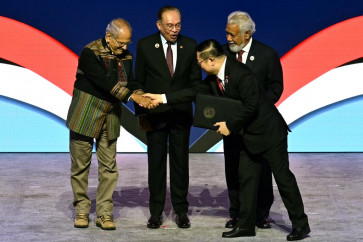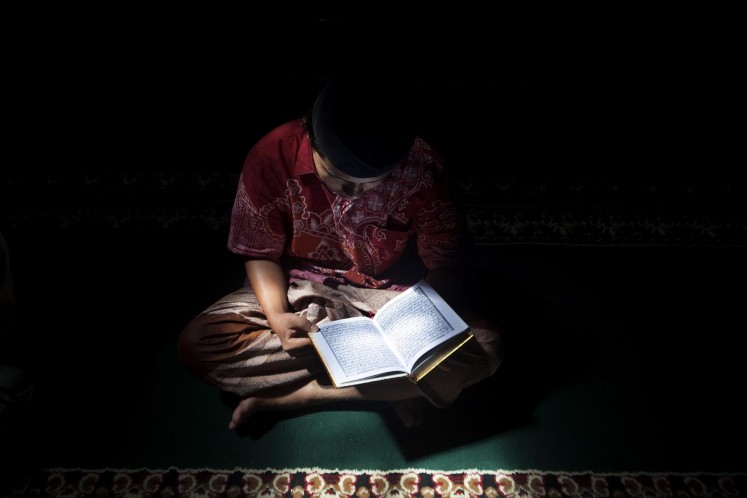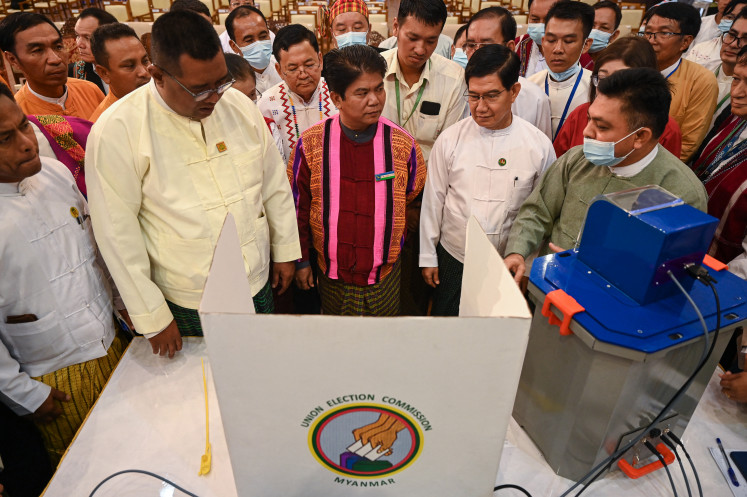Popular Reads
Top Results
Can't find what you're looking for?
View all search resultsPopular Reads
Top Results
Can't find what you're looking for?
View all search resultsTempering fear of returning foreign terrorist fighters
Indonesia has an imminent returning foreign terrorist fighter (FTF) challenge
Change text size
Gift Premium Articles
to Anyone
I
ndonesia has an imminent returning foreign terrorist fighter (FTF) challenge. The latest data from Indonesia’s Countering Foreign Terrorist Fighters Task Force showed that the state has received more than 600 deportees and returnees, while still needing to deal with around 630 Indonesian citizens still in Syria and Iraq. Indonesia should acknowledge that statistical and qualitative assessments of the threat of returning FTFs conclude mixed and nuanced results. While the state should not ignore their threat, they should not exaggerate it either.
Returning FTFs is not a new phenomenon. During the Afghan-Soviet War of 1978 to 1992, between 5,000 to 10,000 individuals flocked to the conflict zone to assist local Afghan fighters. Although a significant number of them moved to other conflict zones such as Bosnia, Chechnya and Algeria, many returned and significantly increased the capacity of domestic terrorist groups in their homelands. Indonesia’s own Jamaah Islamiyah, for instance, relied heavily on members returning from Afghanistan to form the group’s core planners and bombers such as Hambali and Noordin M. Top.
The problem of FTFs returning from Syria, however, is unprecedented. Alex Schmid noted that the 2012 Syrian conflict attracted three to five times as many FTFs compared to the Afghan-Soviet War, with around 25,000 to 30,000 individuals traveling to the conflict zone, most of them expected to return. Out of all of these FTFs, around 80 percent came to be part of the Islamic State (IS) movement. Indonesians began going to Syria in late 2012, with the numbers peaking in early 2016. By March 2017, the Soufan Group reported that the number of Indonesians successfully emigrating to Syria reached 600 people, with an additional 435 being stopped or deported by Turkey.
Returning FTFs undoubtedly carry a significant security threat. A study on returning FTF attacks in Western Europe showed that out of 46 IS-linked attacks and plots between 2014 and 2016, a returning FTF was involved in 39 percent of them.
Although their involvement in the attacks and plots can vary (e.g. executor, recruiter, ideologue, planner), studies commonly conclude that the presence of returning FTFs increases the effectiveness of a group’s attacks. Thomas Hegghammer’s records of terrorist attacks against Western countries found that plots that involve returning FTFs are almost twice as likely to reach execution and cause fatalities compared to plots that do not.
This threat has become more prominent in the case of returning IS FTFs. As Rukmini Calahachi reported, having certain operatives return to their home countries to prepare attacks or inspire self-radicalized lone wolves is an actual IS strategy. The group’s special intelligence branch, Amn Al-Kharji (also called Emni), was reported to have been specifically set up to promote and coordinate these kinds of operations. Using encrypted communication services or even directly sending fighters abroad, the branch has given instructions to guide (e.g. assisting target selections) multiple terrorist plots outside of Syria and Iraq, such as the 2015 Paris attacks and the 2016 Brussels attacks.
Indonesia certainly isn’t an exception to the threat of returning IS FTFs. The mastermind of the Surabaya 2018 triple church bombings, Dita Oeprianto, for instance, was reportedly inspired by a returning FTF from Syria. More recently, a foiled plot by members of Jamaah Ansharut Daulah (JAD) to attack on May 22 was also reported to have involved nine returning FTFs in its planning process. The latest involvement of returning Indonesian FTFs in a terrorist attack, however, was reported in the Philippines. A husband and wife who were deported from Turkey in January 2017 were found to be the culprits of a suicide bombing attack on a cathedral in Jolo.
Nevertheless, the threat of returning FTFs should not be exaggerated. Many studies, in fact, highlight that the probability of an FTF returning and being involved in an attack or plot is actually very low. A study by Hegghammer on FTFs from the West returning from Afghanistan showed that only 11.3 percent of them returned and conducted attacks in their homelands. A similar study on IS FTFs showed that only 0.27 percent have returned to conduct attacks.
Additionally, although IS may have plans to use returning FTFs as key operatives in plotting attacks abroad, that does not mean all returning FTFs intend to or are able to do so. As Daniel Byman and Jeremy Shapiro noted, IS is notorious for numerous cases of infighting and Muslim-on-Muslim violence, which often creates disillusionment among returning fighters. Moreover, their training and operations in Syria, which focuses more on guerilla tactics, also does not necessarily translate well into skills needed for successful terrorist attacks in an FTF’s homeland, such as conducting surveillance and operating clandestinely.
Although comprehensive data surrounding the intentions and capacity of returning Indonesian FTFs are not publicly available, accounts of their disillusionment and lack of violent intentions have been reported numerous times. In late 2014, Julia C. Hwang interviewed several Indonesians who had returned from Syria to find that their departure was caused by distaste for IS’ tactics, which they perceived to depart from the Quran’s rules of war. A 2018 report by the Institute for Policy Analysis of Conflict also noted that not all Indonesians who emigrated to Syria and Iraq planned to partake in violence. Some were simply led to believe that IS manifested the caliphate that would emerge at the end of time and decided to live there as teachers, doctors, or engineers. Now that IS’ territory in Syria has been fully reclaimed, such motivations, even among deportees, will be easier to readjust.
Facing such complex nuances, Indonesia should not simply leave returning FTFs in Syria or Iraq. Although such measures can reap short-term benefits, it may lead to an increased threat in the long run. As other countries refuse to accept their FTFs, the swelling number of prisoners in such post-conflict countries risks overburdening effective prison management.
As a result, originally benign FTFs may face increased animosity and radicalization through unmonitored interaction with more militant FTFs in prisons abroad. Lessons from IS’ Emni also shows that radicalized individuals abroad, by acting as liaisons, can and do still pose a security threat to their homeland.
In receiving them, however, Indonesia needs to better coordinate and manage its existing reintegration programs. This can start with providing larger funding for reintegration institutions and trauma centers, and creating a more comprehensive risk assessment tool to differentiate between violent and nonviolent returnees. But most importantly, authorities need to understand that reintegration is a two-way endeavor. For it to be effective, the state also needs to facilitate society’s acceptance of such returnees by tempering exaggerated suspicion and fear.
_________________________
The writer is a masters candidate in Georgetown University’s security studies program in Washington, DC, focusing on terrorism and political violence around Southeast Asia.










